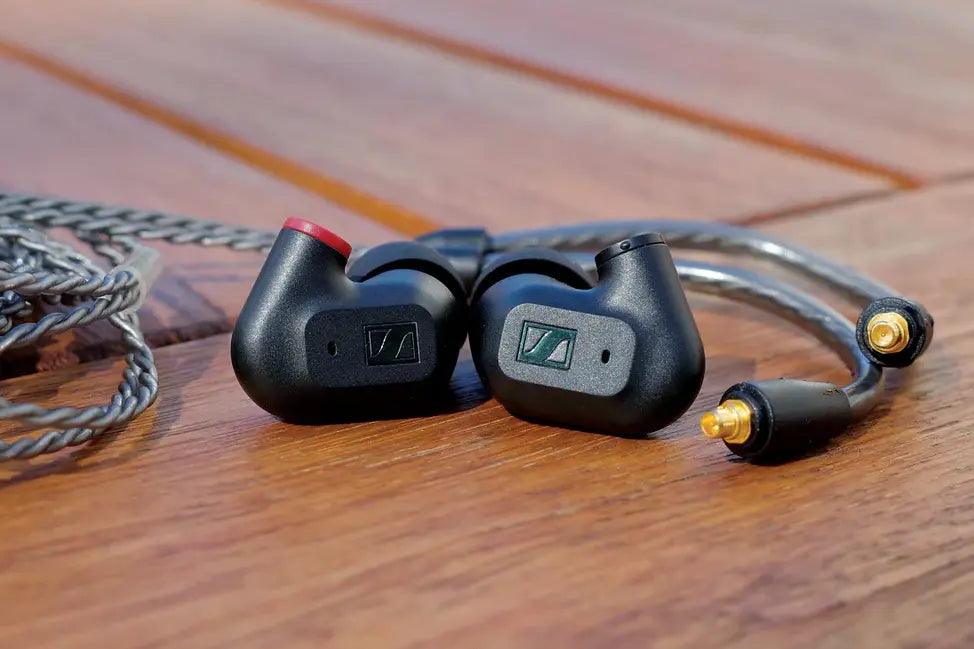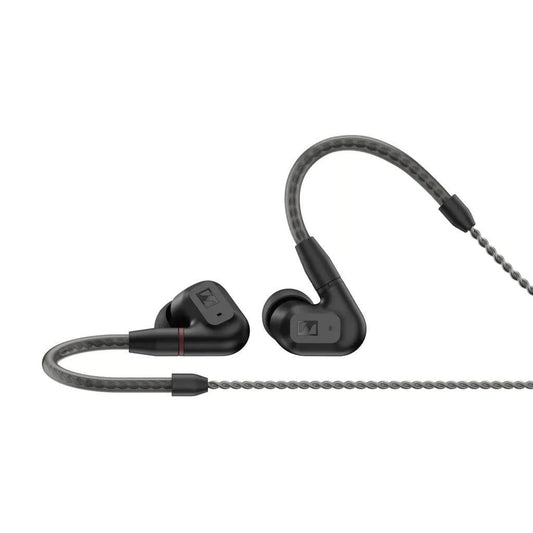Sennheiser IE200 Review - A Breath of Fresh Air

Introduction
Sennheiser is a stronghold name in the audio industry; a name that has even managed to penetrate the mainstream market. But if there were unchartered waters, it would be Sennheiser’s past attempts to enter the IEM scene. Even the brand’s flagship IEM, the IE900, was met with a frosty reception. Recently, however, it’s clear that Sennheiser has begun catering to the audiophile industry more closely. We saw this not only with the release of the HD8XX (a much requested collaboration with Drop), but more importantly with the IE600 which represented a marked shift to the tuning of their IEMs. Now the real question: how has this paradigm shift affected the brand’s latest IEM, and their cheapest at $150, the IE200? Let’s take a closer listen to find out.
This unit was loaned for review by Headphones.com. It will be returned at the end of the review period. As always, what follows are my honest thoughts and opinions to the best of my ability.

The cable of the IE200 is not my favorite…and that’s an understatement. It is highly microphonic - it makes a lot of noise if you’re on the move with the IEMs in your ears - and it has a number of idiosyncrasies that could have easily been avoided. One example is the annoying memory wire. Another example is the lip to the MMCX connectors that most standard MMCX cables lack. From a durability standpoint, it’s a possible boon. But it also means that you’ll have to either 1) modify your existing cables, or 2) search high and low when you want a replacement cable. And believe me, you’ll probably want to replace this cable.

The IE200 has the same ergonomic design that characterizes Sennheiser’s other IEMs. It is a small IEM that sits flush against the ear, which makes it one of the rare IEMs optimal for side-sleepers. Synonymous with its price point, the IE200 makes use of plastic for its construction instead of the aluminum that characterizes its older brothers, the IE600 and IE900. Something that might pique is the inclusion of a vent at the IE200’s nozzle. Leaving it open reduces the quantity of bass, resulting in a brighter, more “analytical” sound.

In a similar vein, it’s worth noting that the IE200 is extremely tip sensitive. This is common with IEMs that exhibit extreme high-frequency extension; however, the stock tips also have a foam filter inside. The filter dampens the treble by about 1dB; certainly not a big deal normally, but relevant when considering other tips and given the precarious balance the IE200 strikes in the mid-treble. With past Sennheiser IEMs like the IE900, I have found that even the size of the silicon tips made a difference; the smallest ones noticeably having the best slam and bass tactility. This is ostensibly a product of deeper insertion depth.
Sound Analysis
Generally, the single-DD market is dominated by a very specific type of sound signature that falls along the lines of the Harman in-ear target with some extra warmth. It’s a simple, tried-and-true formula that caters to a majority of listeners which is why so many companies try to emulate it:

But Sennheiser has always had other ideas about how to tune their IEMs. Most of their past IEMs would be best described as “colored”, a description often realized through a recessed upper-midrange region and copious amounts of mid-treble. In the past, this has made them polarizing listens; I was a fan of Sennheiser’s IE900 but knew that it would not be for everyone. Beginning with the IE600, however, Sennheiser took a dramatic shift to tuning their IEMs.

The measurements above were taken off of a clone IEC-711 coupler. Generally, there is a resonance peak at ~8kHz, so measurements after this point should not be considered entirely accurate. If you’d like to compare the IE200 to the hundreds of other IEMs that I have measured, please see here.
The IE200 seems to embody a lot of what Sennheiser has learned from the IE600. The most impressive part about the IE200 would no doubt be its treble response. Single-DDs are often synonymous with poor treble extension. Of course, there are some recent outliers, like the CCA CRA+, but these would best be described as more uncontrolled in the upper-treble and artificial sounding. Sennheiser’s own IE900 is possibly one of the best examples of a “controlled” treble response wherein it makes use of resonance chambers in the shell to tastefully fine-tune the mid-treble while maintaining extension. The IE200 doesn’t quite measure up to the IE900 in this regard - it lacks some intensity at 5kHz to the initial crack of snares, and it’s a little more splashy - but it comes pretty close for being a fraction of the cost. It also does away with some of the treble glare that I found harsh on the IE600.
Other aspects of the IE200’s tuning are less praiseworthy, but quite reasonable for $150. The bass shelf of the IE200 is sharply sub-bass focused for a clean response. I do find it somewhat dry-sounding; most of this sentiment would be baked into the elevated treble response which neuters overall perception of bass decay. The midrange of the IE200 is somewhat unique amongst most single-DDs in that it does indeed sport a more relaxed 3-4kHz region in typical Sennheiser fashion. However, it is not done egregiously, and I almost find myself wishing there was either 1) more warmth in the lower-mids or 2) more recession from 3-4kHz to counteract the IE200’s treble emphasis. As it stands, the IE200 can surprisingly come across somewhat thin-sounding in the midrange.
Technicalities on the IE200 are impressive. The more reserved presence region and excellent treble extension encourages listeners to listen more closely to vocals, for which trailing note edges are easily picked-up on. The IE200, irrespective of its price, is easily in the running for being one of the more detailed sounding single-DDs I’ve heard. Comparatively, imaging is mostly average wherein the soundstage of the IE200 does not expand outside the shells despite relatively good distinction between individual instruments.

The Bottom Line
The IE200 is neither a slap in the face to the existing landscape of sub-$200 single-DDs, nor does it entirely put Sennheiser back in the good graces of IEM enthusiasts. However, it does offer a flavor of tuning that you won’t find at a cheaper price, and I think it’s well-worth a listen if you’re looking for a break from the increasingly homogenous budget market.
On the other hand, if you’re someone who’s been saving up for some time, then it’s possible you’re more attracted to the IE200's older brothers. In that vein, I’d encourage you to check out my reviews on the Sennheiser IE600 and the Sennheiser IE900 too!
